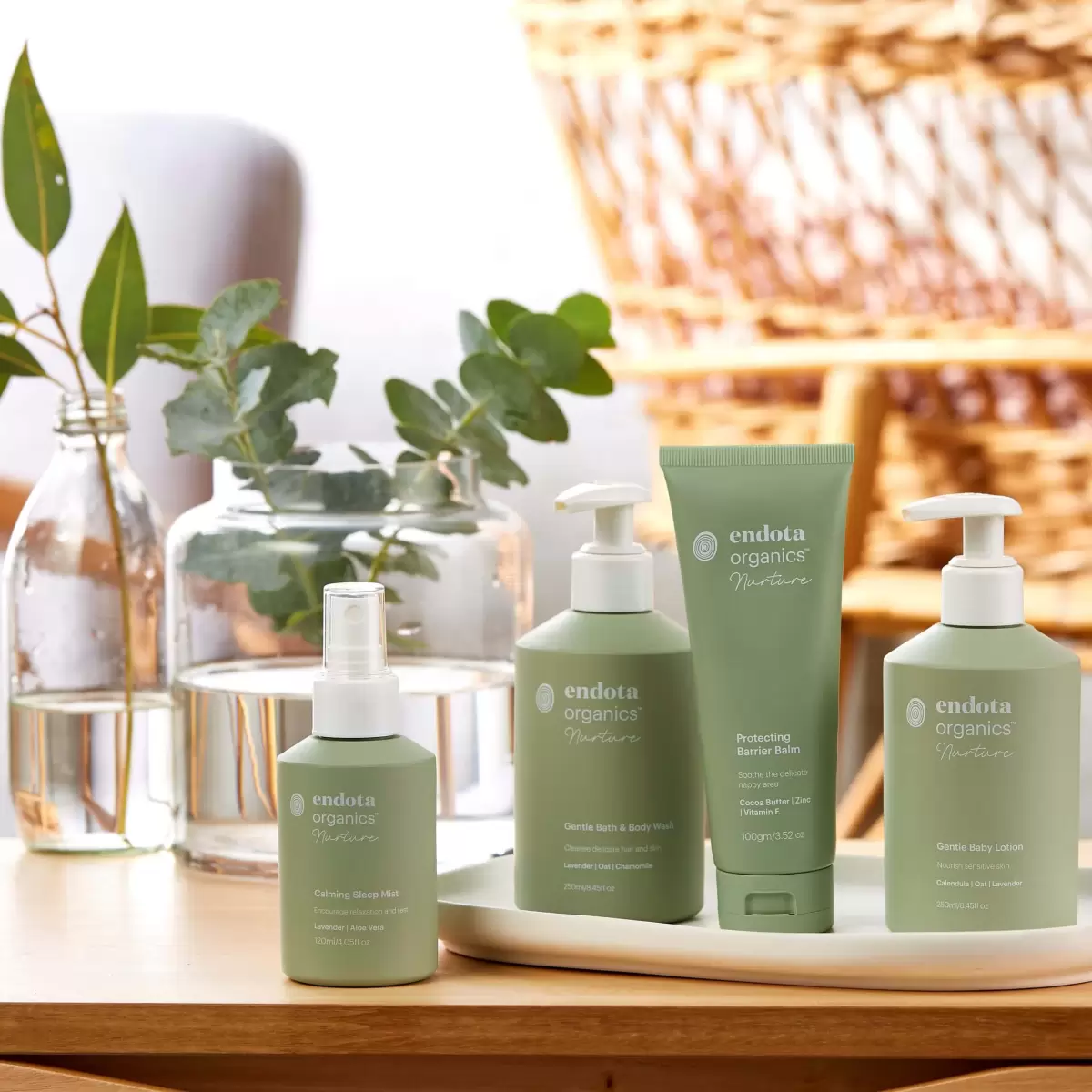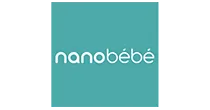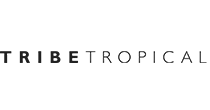Insights Into Prenatal Skin Development With Endota Spa

There are few things in life more delightful than the look, feel and smell of a newborn baby. Just touching an infant, we realise how infinitely precious and delicate they truly are. Newborn skin is obviously different from ours but it is not commonly understood why and what we need to do to look after it properly.
When it comes to choosing skincare for babies, there is a lot to think about and like most things, the decisions we make early on can have lasting effects. If we take into consideration the natural development of young skin, we can make skincare choices that benefit their long-term skin health.
The science of growing skin
Skin before birth
Our skin started its development as early as 4 weeks after conception. By 18 weeks, hair and sebaceous glands (the glands that produce the oily/waxy sebum) are present on our skin and by 23 weeks our sweat glands (eccrine glands) have appeared. By 34 weeks, the fetal skin develops a more adult-like layering structure. It’s not until just before birth that the fetal dermis is thickened by an increase in collagen content.
During the last trimester, the fetus is covered by the vernix (vernix caseosa), a protective coat secreted by the sebaceous glands and composed of protein, lipids and water. The vernix helps to protect the fetal epidermis from maceration (softening from being wet) while immersed in amniotic fluid. The vernix is uniquely human and is believed to allow the fetal skin to continue to mature, despite being continuously wet in utero. The vernix contains high levels of anti-infective properties. There is evidence that vernix retention after birth, rather than immediate removal, leads to significantly higher skin hydration 24 hours after birth and a lower skin pH, suggesting that the vernix assists in skin hydration and acid mantle development.
The World Health Organisation (WHO) recommends leaving the vernix on a newborn’s skin for at least 6 hours after birth. This means not wiping or washing your baby for at least 6 hours after delivery.
Skin at birth
At birth, full-term infants have skin that is anatomically mature – including all five functional layers. However, you might be surprised to find that the skin of a baby in its first 30 days has a somewhat coarse texture. This is because neonatal skin is still developing its smoother structure over the first month of life. As newborn skin changes and develops its protective outer layer, it can also suffer water loss, making proper skin hydration important for infants.
Young children do not have a fully developed outer layer, or skin barrier, between their body and the outside environment as they have smaller corneocytes and a thinner stratum corneum for the first 1-2 years of life compared to adults. Our skin barrier prevents toxins, allergens, chemical irritants, viruses and bacteria from entering our bodies which is why adequate skincare is so important in the early years of life.
Pre-term infants are at even greater risk of exposure. These infants usually have poor epidermal barrier function, are at increased risk of skin damage and infection and are particularly vulnerable to irritants, infections, water and electrolyte loss and extreme temperatures. It can take up to 9 weeks for the skin barrier to mature in pre-term infants and even longer for complete acid mantle formation.
Maintaining an appropriate skin pH protects us against infection and ensures proper skin functioning. It also helps our skin maintain the natural and beneficial colonies of bacteria, (microbiome) we need for good health. Our skin pH at birth is relatively neutral but quickly drops, reaching our adult pH range of 4.5-5.0 very soon after birth.
What does the science say about the most appropriate skincare for babies?
Caring for baby’s skin should start as early as possible. Cleansing is important to remove irritants such as saliva, nasal secretions, urine, faeces, and faecel enzymes. It is equally important to not strip the skin of its naturally beneficial oils and the healthy microbial environment necessary for proper skin health.
Evidence suggests that mild, liquid-based cleansers with a pH either neutral or mildly acidic maintain better hydration of infant skin than washing with water alone. pH neutral or mildly acidic cleansers have also shown to be slightly better than diluting olive oil in the bath or using products with a pH greater than 7 (alkaline).
Avoiding harsh chemicals and toxic ingredients is essential to good health, especially early on but well into the first years of life, while your little one is still developing their protective skin barrier. Skip antibacterial products and instead go back to basics with gentle, low irritant, certified organic products.
Introducing endota Organics™ Nurture
With all of this science in mind, and knowledge of the key developmental events occurring in our babies’ skin, we are proud to have developed endota Organics™ Nurture, a range of mother and baby skincare products that are all natural or certified organic. Developing the Nurture range of skincare meant really understanding mother and baby’s skin at critical stages of development, so we could support these natural changes without interfering with them. To do this we’ve created products that are as close to nature as possible and simplified our formulations to meet the relatively simple needs of a baby’s skin – to gently cleanse and hydrate while maintaining skin pH.
The entire Nurture range is COSMOS certified organic or natural by Australian Certified Organic, dermatologically tested for sensitive skin and pH balanced. Made using tried and trusted all-natural ingredients including chamomile, lavender, oat and aloe vera endota Nurture gives you confidence that you’re supporting both your skin’s needs and the environment in the safest way possible.
To ensure Nurture is suitable for mothers and babies and those with sensitive or reactive skin, we’ve left out all harsh ingredients and chemical irritants. Nurture contains no mineral oils, paraffins, parabens, phenoxyethanol, lanolin, silicones, SLS, SLES, PEG, colourants or artificial fragrances. What we leave out is just as important as what we put in.
References
- Cooke A, Cork MJ, Victor S, Campbell M, Danby S, Chittock J, Lavender T (2016) Olive oil, sunflower oil or no oil for baby dry skin or massage: A pilot, assessor-blinded, randomised controlled trial (the Oil in Baby SkincaRE [OBSeRvE] Study). Acta Derm Venereol 96: 323-330
- Lavender T, Bedwell C, O’Brien E, Cork MJ, Turner M, Hart A (2011) Infant skin-cleansing product versus water: A Pilot randomised, assessor blinded controlled trial. BMC Pediatrics 11:35
- Lavender T, Bedwell C, Roberts SA, Turner MA, Carter L, Cork MJ (2013) Randomised, controlled trial evaluating a baby wash product on skin barrier function in healthy, term neonates. Journal of Ob, Gyn & Neo Nurs 42(2): 203-214
- Leung A, Balaji S, Keswani SG (2013) Biology and Function of Fetal and Pediatric Skin. Facial Plast Surg Clin North Am 21(1): 1-6
- Telofski LS, Morello III AP, Correa MCM, Stamatas GN (2012) The infant skin barrier: can we preserve, protect, and enhance the barrier? Dermatology Research and Practice 2012:198789
- Visscher MO, Adam R, Brink S, Odio M (2015) Newborn infant skin: Physiology, development and care. Clinics in Dermatology 33, 271-280
- Visscher MO, Narendran V (2014) The ontogeny of skin. Advances in Wound Care 3(4):291-303
- Visscher MO, Narendran V, Pickens WL, LaRuffa AA, Meinzen-Derr J, Allen K, Hoath SB (2005) Vernix Caseosa in Neonatal Adaptation. Journal of Perinatology 25:440-446
Words by Dr Hayley. Dr Hayley Dickinson, BSc (Hons), PhD is a women’s health expert. In addition to a successful career as a respected scientific advisor and researcher, Hayley is also a mother committed to her own journey of selfcare. Her personal quest is to work with and inspire as many women as she can to achieve their health and wellbeing goals, and prioritise themselves and their individual needs.
Disclaimer: Dr Hayley Dickinson is a research scientist with a PhD in women’s reproductive health, who does not claim to be a medical practitioner. We seek to offer insights into the health of women experiencing the reproductive, menstrual and hormonal characteristics of female biology. In addition, we offer scientific insight into wellness and lifestyle choices relevant to all. Neither Endota nor Dr Hayley Dickinson accept any liability for the information or advice (or use of such information or advice) which is provided in this blog or incorporated into it by reference. We provide this information on the understanding that all persons accessing it take responsibility for evaluating its relevance and accuracy. Women are encouraged to discuss their health needs with a health practitioner. If you have concerns about your health, you should seek advice from your health care provider or if you require urgent care you should go to the nearest hospital Emergency Department. © endota, 2018-2019















.png.webp)

.png.webp)
































